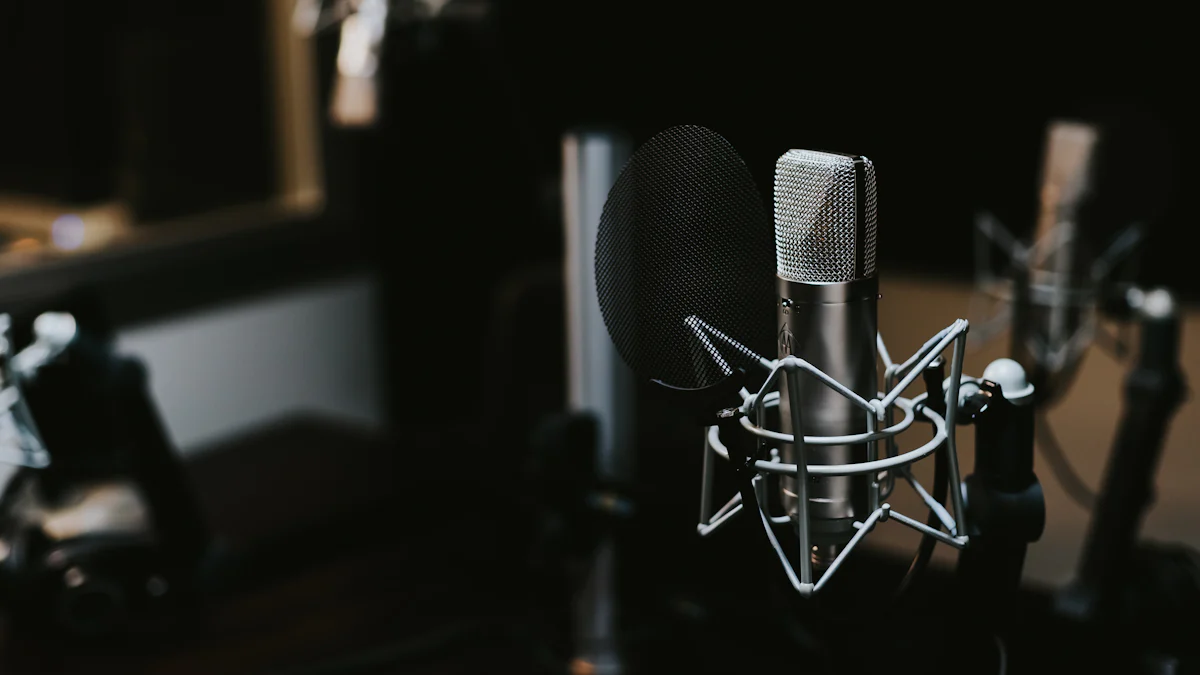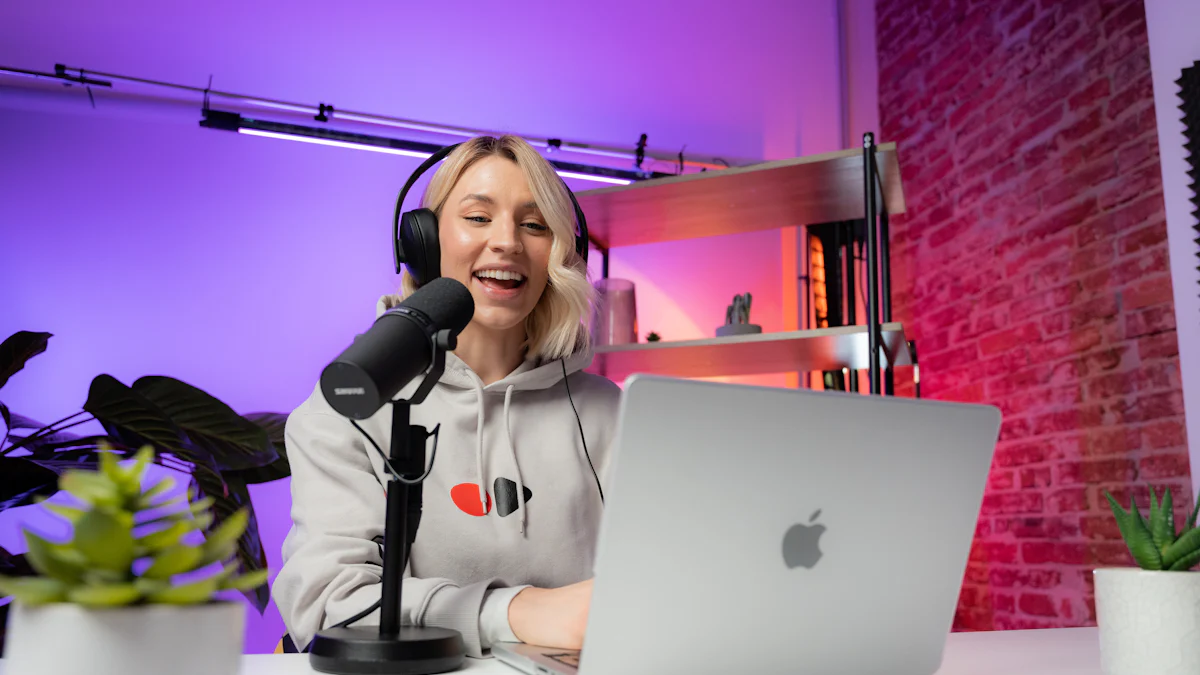How to Quickly Create AI Podcasts with NotebookLM

AI podcasts are transforming the way you consume content. They offer a unique blend of technology and creativity, making it easier for you to access information on the go. Efficiency in podcast creation is crucial, especially when 40% of podcasters use AI tools to enhance their content. This is where NotebookLM comes into play. NotebookLM allows you to quickly generate engaging audio content without the hassle of traditional recording methods. With NotebookLM, you can focus more on creativity and less on technicalities, making your podcasting journey smoother and more enjoyable.
Understanding NotebookLM
What is NotebookLM?
NotebookLM is a groundbreaking tool that transforms the way you create podcasts. Imagine turning any written content into a lively audio discussion. That's what NotebookLM does. It takes your documents, blog posts, or even random notes and converts them into engaging podcast-style conversations. This isn't just a simple text-to-speech tool. Instead, it features two AI voices that discuss your content, making it sound like a real conversation. The voices are so human-like and emotive that listeners might forget they're hearing AI.
Features of NotebookLM
NotebookLM comes packed with features that make podcast creation a breeze:
AI-Generated Conversations: It doesn't just read your text. It creates a dialogue between two AI hosts, making the content more engaging.
Audio Overview Function: This feature allows you to get a quick summary of your content in audio form.
Customizable Content: You can upload various types of content, from documents to web pages, and NotebookLM will handle the rest.
Lifelike AI Voices: The voices are designed to sound natural, enhancing the listening experience.
Benefits of using NotebookLM for podcast creation
Using NotebookLM offers several advantages:
Efficiency: You can generate a podcast in minutes, saving you time and effort.
Accessibility: Transforming written content into audio makes it easier for people to consume information on the go.
Engagement: The conversational style keeps listeners interested and engaged.
Versatility: Whether you're a blogger, educator, or business professional, NotebookLM can cater to your needs by turning your content into podcasts.
Setting Up NotebookLM
Getting started with NotebookLM is straightforward. Here's how you can set it up:
Installation process
Sign Up: First, you'll need to create an account on the NotebookLM platform.
Download: Once registered, download the NotebookLM application to your device.
Install: Follow the on-screen instructions to install the software. The process is user-friendly and quick.
Initial configuration
Log In: After installation, log into your account.
Create a New Notebook: Start by creating a new notebook where you'll upload your content.
Add Sources: Upload the documents or text files you want to convert into a podcast.
Configure Settings: Adjust the settings to customize the AI voices and the style of the podcast.
With these steps, you're ready to dive into the world of AI podcasting with NotebookLM. It's a tool that not only simplifies the process but also enhances the quality of your content.
Preparing Your Content
Identifying Your Podcast Topic
Choosing the right topic is crucial for your podcast's success. Here's how you can do it:
Researching potential topics
Start by exploring areas that interest you. Look at trending subjects in your field. Use online tools to see what people are talking about. This helps you find topics that resonate with your audience.
Selecting a niche
Once you have a list of potential topics, narrow it down. Focus on a specific niche. This makes your podcast unique and appealing. A well-defined niche attracts a dedicated audience who shares your interests.
Scriptwriting for AI Podcasts
Creating a compelling script is key to engaging your listeners. Here's how to craft one:
Writing engaging scripts
Write in a conversational tone. Imagine you're talking to a friend. Keep sentences short and clear. Use questions to engage your audience. This keeps them interested and makes your content relatable.
Incorporating AI elements
Integrate AI features to enhance your podcast. Use AI-generated insights to add depth to your discussions. This not only enriches your content but also showcases how AI can transform traditional methods. By doing so, you create a dynamic and informative podcast that stands out.
Creating the Podcast with NotebookLM

Recording Your Podcast
Creating a podcast with NotebookLM is a breeze. You can dive right into recording with its intuitive features.
Using NotebookLM's recording features
NotebookLM offers a seamless recording experience. You simply upload your content, and the tool takes over. It transforms your text into a lively conversation between two AI voices. These voices don't just read—they engage in a dialogue, making your podcast sound natural and engaging. This feature sets NotebookLM apart from basic text-to-speech tools.
Tips for high-quality audio
To ensure top-notch audio quality, consider these tips:
Quiet Environment: Record in a quiet space to minimize background noise.
Microphone Quality: Use a good quality microphone if possible. It enhances clarity.
Volume Levels: Keep an eye on volume levels to avoid distortion.
Editing and Enhancing with AI
Once you've recorded your podcast, it's time to polish it using NotebookLM's editing tools.
AI tools for editing
NotebookLM provides powerful AI tools for editing. You can easily trim unwanted sections and adjust the pacing. The AI can even suggest improvements, making your podcast more engaging. This feature saves you time and effort, allowing you to focus on content rather than technical details.
Adding sound effects and music
Enhance your podcast by adding sound effects and music. NotebookLM allows you to integrate these elements seamlessly. Choose music that complements your theme and sound effects that add depth to your narrative. This not only enriches the listening experience but also makes your podcast stand out.
Expert Testimony: An educator from DataCamp highlights, "One of the most innovative features of NotebookLM is its ability to create customized podcasts with two AI voices discussing your documents. The voices are remarkably human and emotive."
By following these steps, you can create a professional-sounding podcast with NotebookLM. It's a tool that empowers you to produce high-quality content effortlessly.
Publishing and Promoting Your Podcast

Exporting Your Podcast
Once you've crafted your podcast, it's time to share it with the world. Exporting your podcast correctly ensures that your audience enjoys the best quality.
File formats and quality settings
Choose the right file format for your podcast. The most common format is MP3 due to its balance of quality and file size. Ensure you export your podcast at a high bitrate, like 128 kbps or higher, to maintain audio clarity. This step guarantees that your listeners experience crisp and clear sound.
Uploading to podcast platforms
After exporting, upload your podcast to popular platforms. Services like Apple Podcasts, Spotify, and Google Podcasts reach a wide audience. Each platform has its own guidelines, so follow them closely. This ensures your podcast gets approved and listed quickly.
Marketing Strategies
Creating a podcast is just the beginning. Promoting it effectively helps you reach and engage with your audience.
Social media promotion
Social media is a powerful tool for promoting your podcast. Share snippets or highlights on platforms like Instagram, Twitter, and Facebook. Use eye-catching visuals and engaging captions to draw attention. Encourage your followers to share your content, expanding your reach even further.
Engaging with your audience
Building a connection with your audience is key. Respond to comments and messages promptly. Ask for feedback and suggestions to improve your content. This interaction not only builds loyalty but also helps you tailor your podcast to your audience's preferences.
Regina, a seasoned podcaster, emphasizes the importance of understanding your audience:
"The most impressive part was how much time Regina put into properly researching myself, my organization, and our values. Because of that work, the end result was a podcast episode that resonated with the audience and served our goal of putting our story in audio format!"
By following these steps, you can effectively publish and promote your podcast, ensuring it reaches and resonates with your target audience.
FAQs and Troubleshooting
Common Questions
How to handle technical issues
When you encounter technical issues with NotebookLM, don't worry. Start by checking your internet connection. A stable connection ensures smooth operation. If problems persist, restart the application. This simple step often resolves minor glitches. For persistent issues, visit the NotebookLM support page. They offer detailed guides and FAQs to help you troubleshoot effectively.
Best practices for content creation
Creating engaging content requires a few key practices. First, focus on clarity. Make sure your script is easy to understand. Use short sentences and simple language. Next, incorporate AI elements thoughtfully. Let AI enhance your content without overshadowing your voice. Finally, keep your audience in mind. Tailor your content to their interests and needs.
Troubleshooting Tips
Solving audio quality problems
Audio quality can make or break your podcast. To ensure top-notch sound, record in a quiet environment. Use a quality microphone if possible. Check your settings in NotebookLM. Adjust the volume levels to avoid distortion. If you notice background noise, try using noise-canceling software. These steps will help you achieve clear and professional audio.
Addressing software glitches
Software glitches can be frustrating, but they're often easy to fix. Begin by updating NotebookLM to the latest version. Updates often include bug fixes and improvements. If the problem continues, clear your cache and restart the application. For more complex issues, reach out to NotebookLM's support team. They can provide personalized assistance to get you back on track.
NotebookLM Insight: "Prompt engineering is crucial for clear and specific questions to get the most out of NotebookLM."
By following these tips, you can handle common challenges and create high-quality podcasts with ease.
Creating podcasts with NotebookLM is a game-changer. You can transform written content into engaging audio in minutes. This tool simplifies the process, allowing you to focus on creativity. As you explore NotebookLM, experiment with its features. Let AI enhance your podcasting journey. The future of AI in media production looks promising. It offers new opportunities for growth and innovation. By collaborating with AI, you can expand your creativity and reach more audiences. Embrace this technology and see how it can elevate your content creation.
See Also
Content Creation Showdown: Writesonic AI Battles QuickCreator
Top 5 AI Tools Competing with Scalenut for Content Creation
Complete Guide to SEO Mastery with Perplexity AI
Optimizing Viewer Interaction with TikTok Analytics: Step-By-Step
Streamlined Content Production: Quick Creator's Latest Update Explained

